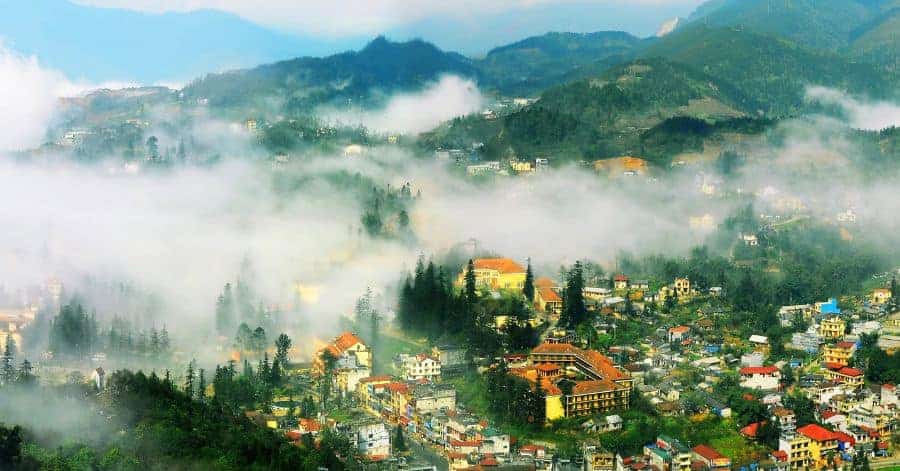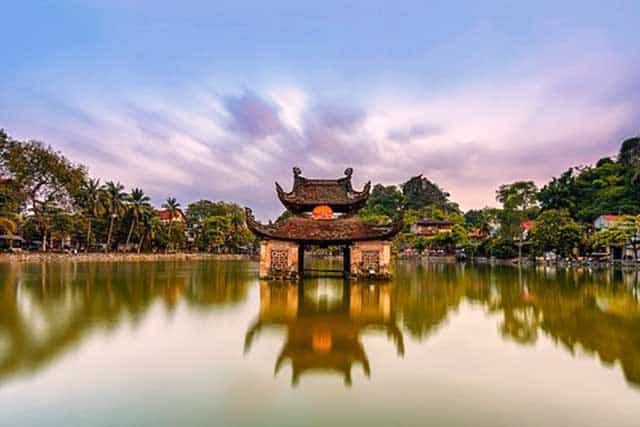With its fairy-like beauty, the “fog town” Sapa is a favorite travel destination for everyone. Whether you are looking for a quiet vacation or an exciting trip, Sapa will satisfy your wishes. To be ready for a fantastic journey, let’s look at this list of the best things to do in Sapa, Vietnam.
Read also:
- Best Restaurants and Cafes in Sapa, Vietnam
- 20 Best Things to do in Hoi An, Vietnam
- 10 Must-Visit Museums in Hanoi, Vietnam
- 11 Best Things to do in Ninh Binh, Vietnam
- 7 Best Things to do in Dalat, Vietnam
- About Sapa
- Best time to visit Sapa
- Going on a trek through the terraced rice fields
- Conquer Fansipan – Indochina's highest peak
- Explore Silver Waterfall and Love Waterfall
- Take a trip to Muong Hoa Valley
- Going on a guided motorbike tour
- Explore Ham Rong Peak
- Discover Cat Cat village
- Experience the local culture at Bac Ha market
- Visit the spectacular French colonial-style Sapa Stone Church
- Check out the Cho Tinh – Sapa Love Market
- Visit Ta Phin village, home to the Red Dao people
- Check out Ta Phin Cave
- Trying Sapa's local cuisines
- Visit Sapa Culture Museum to learn about Sapa culture
- How to get to Sapa from Hanoi
About Sapa
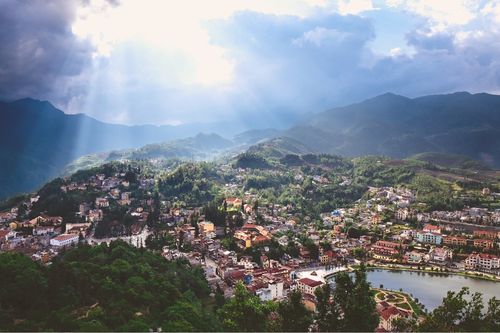
Sapa (or Sa Pa) is a mountain town in the district of the same name located in Northwest Vietnam, 315 kilometers from Hanoi. This town is located roughly 1,500m to 1,800m above sea level, with ethnic minorities making up the majority of the population.
The French have considered Sapa a possible tourism destination since the 1940s. The embassy, the Governor-mansion, the General’s hydropower system, and more than 200 classic villas in Sapa are still evidence of the French aristocracy’s former presence there, adding to the beauty of this mountain town in every direction. Whether you are an adventurous traveler or seeking a relaxing getaway, Sapa has everything to suit your needs.
Best time to visit Sapa
The chilly climate of Sapa makes it a year-round destination. Stay away from stormy weather from early June to early August because this is when floods, flash floods, and landslides are most likely to occur.
Spring blooms from January through March with various flowers, from peach blossoms to plum blossoms, creating a picture-perfect backdrop that is nowhere to be seen. Also, the H’Mong and Dao ethnic groups are celebrating their traditional festivals at this time, so you are welcome to visit and participate in the festivities.
The rice planting season runs from April through May. The new rice’s vibrant green color will now cover every terraced field. Come here at dawn or sunset to see the scene of the glittering sunshine reflecting down on the very poetic rice fields. August through September is a fantastic time to visit if you enjoy the view of the rice fields during harvest. The seedling’s original young, green hue has now given way to the ripe rice’s golden hue.
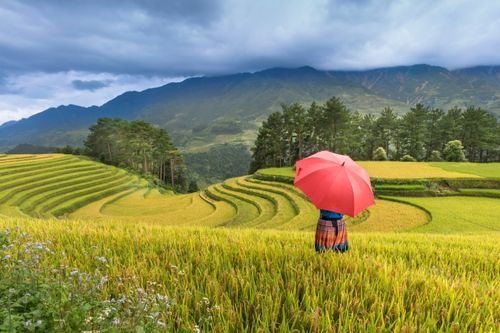
The months of October to December are late autumn and early winter. This is the time of year when travelers flock to Sapa to see the buckwheat flowers in full bloom, which turn the entire Northwest mountains pink. Additionally, the Buckwheat Flower Festival is taking place at this time, offering interesting cultural experiences. It gets freezing throughout the winter, and you may see snow falling.
Now here are the best things to do in Sapa, Vietnam.
TourTeller’s Pick – Top Sapa Tours
Offer
Going on a trek through the terraced rice fields
The first thing that comes to mind when someone mentions Sapa is terraced fields. The terraced fields in this area are like enormous stairs going to the sky, and their many patterns combine to form a spectacular natural scene. Therefore, it should come as no surprise that these terraced fields are among Asia’s top 7 most beautiful terraced fields.
However, terraced fields are not always appealing. There are two optimal periods to appreciate the lovely natural landscape of the terraced fields completely. The first is during the rice transplanting season from April to May, when the rice fields are lush. The second period is from September through October, when the rice is ready, and the fields are covered in a golden sheen. If you’re looking for a picturesque photo opportunity, arrive at dawn or dusk.
Here are the top four terraced fields you can choose from:
Offer
Sapa – Cat Cat route
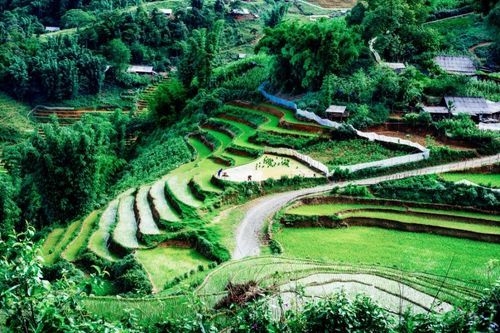
Between Sapa town and the Lao Chai village of Cat Cat, this road is approximately 12 kilometers long. To travel together across the endless rice fields and on the ride, you can rent a motorcycle in Sapa. Then, you can take a stroll and slowly take in the scenery.
If you travel the entire distance between Sapa and Cat Cat, you will witness terraced fields surrounded by little towns where people live in small dwellings. You can visit this location to learn more about the local basic ethnic population and check in the ripe rice fields.
Muong Hoa – Lao Chai Route
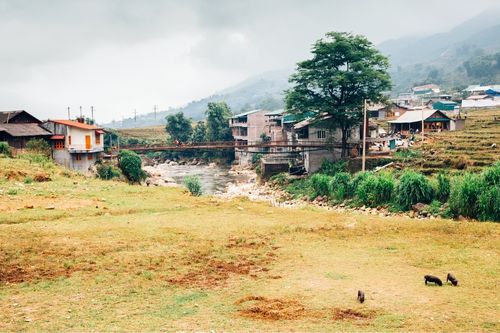
You can reach Muong Hoa valley by continuing on Cau May Boulevard after leaving Cat Cat village. This region is home to the most stunning terraced fields in Sapa. Several terraced fields are mixed with various Sapa communes, covering a vast area of more than 1000 hectares of rice fields.
When visiting the terraced fields in Sapa via this road, you will undoubtedly be taken aback by the natural beauty of the unending stretch of terraced fields set on a high slope. The breeze softly blows abundant rice plants that look like sea waves, making the picture more vibrant.
Sapa – Muong Hum Route
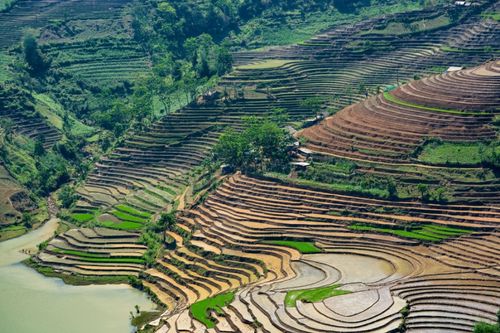
The road is up to 85 kilometers long and runs through hills. Thus, you should travel by motorcycle. Even though the journey is very long, it is worth a shot. The green tint of the slopes, vast and little, surrounds the ripe rice fields. The scenery appears to be merging the two colors of nature at this time to make an exceedingly gorgeous picture.
Sang Ma Sao – Y Ty Route
Sang Ma Sao is located in the Bat Xat district, 50 kilometers from Sapa town; you will travel here by motorbike from Sapa town to appreciate the natural beauty. As you travel along this road, you will come across terraced fields on the hillside, and in the middle of these fields is the little cottage of the people. A very calming sensation in a serene mountain setting.
Offer
Conquer Fansipan – Indochina’s highest peak
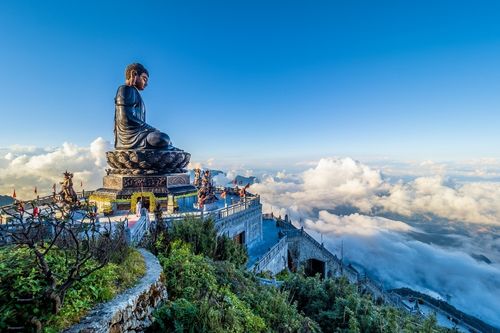
Fansipan, a peak in the Hoang Lien Son mountain range, is 3143 meters high. It is referred to as the “Roof of Indochina” and is the tallest mountain in Vietnam. It is not an exaggeration to say that everyone wishes to conquer this peak at least once.
Standing atop Fansipan, you can completely appreciate the majesty of the mountainous landscape. The white clouds are close enough to touch; you can see the stilt-roofed cottages, rivers, and streams below. The scenery is breathtaking, like something out of a fairy tale that you won’t find anyplace else.
There are two ways to reach Fansipan Peak: hiking or using a cable car.
Offer
Trekking
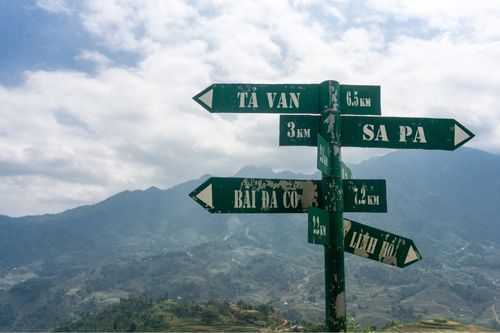
Climbing activity at Fansipan has declined with the installation of the cable car. However, for individuals who are daring and enthusiastic about traveling, the thrill never seems to fade. You can venture off on your own to explore new paths. However, it is still preferable to go on a tour because each excursion includes a guide and a porter to transport your belongings. You don’t need to prepare food for the journey, and you can avoid getting lost.
The trek to Fansipan can take around 2 to 7 days, depending on each individual’s condition, but most good-health travelers only take 2-3 days. You’ll have to climb more than 22km to go back and forth. Although the journey is difficult and risky, there are rewarding moments when conquering the “sanctuary,” conquering the untamed but magnificent nature, and, most importantly, overcoming your limits.
There will be three paths, one for each of the three difficulty levels: easy, medium, and challenging. You can choose the best path for you. This summit is best visited from September to March. The weather is ideal at the moment, not too cold and sunny, perfect for panoramic views from above.
Cable car
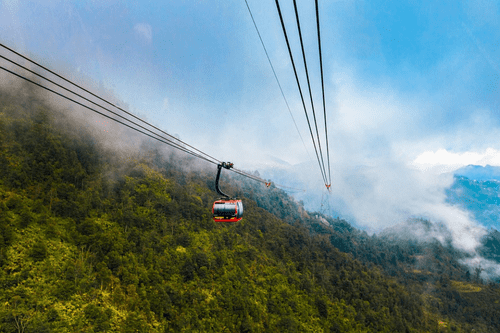
Take the cable car and mountain train to the top of Fansipan to save energy. In the morning, your line to buy tickets is at the mountain railway station outside Sa Pa town square (Sun Plaza). A cable car ticket costs 30.47 USD for an adult, 22.37 USD for a kid, and 4.22 USD for a mountain train ticket.
You can fully admire the stunning mountain panorama and the lovely Muong Hoa valley from the cabin. A picture of nature is both dynamic and tranquil. You may explore Fansipan by cable car at any time of the year. However, you must also check the weather prediction ahead to avoid days when the fog is so dense that you cannot see the entire surrounding area.
Explore Silver Waterfall and Love Waterfall
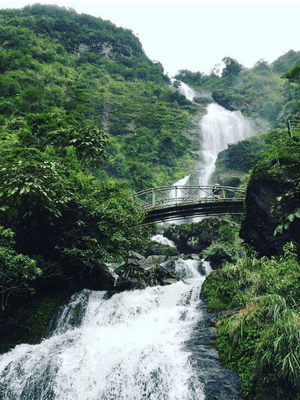
Silver waterfall and Love waterfall are two major must-see stops along the O Quy Ho pass route, which are 3 km from the pass. Tickets for Silver Waterfall are 0.85 USD for each person, while Love Waterfall tickets are 3.2 USD each.
Silver Waterfall, which plunges from a height of 200 meters, spews white foam that resembles floating clouds. The locals here have given the waterfall the name Silver because of its white foam. There are stairs leading up to the top of this waterfall to explore it.
Love Waterfall is also a popular tourist destination. You will have to walk through a 1.5 km-long primeval forest, surrounded by hundreds of ancient mossy and meditative bamboo canopies, before arriving at Love Waterfall. The waterfall appears to be a dazzling cone in the sun from a distance. With an altitude of nearly 100m, Love Waterfall brings the chilly air of the mountains and forests.
- Address for Love Waterfall: Son Binh, Tam Duong, Lai Chau
- Google Maps for Silver Waterfall: Here
Offer
Take a trip to Muong Hoa Valley
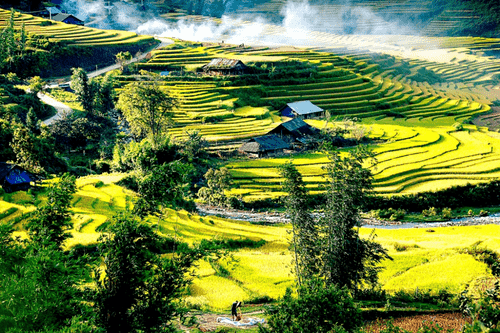
The Muong Hoa valley, roughly 8 km from Sapa town, is popular with tourists because of its lovely natural beauty. The rolling terraced fields and the enigmatic ancient stone field are the two most notable attractions of this valley that come to mind when people talk about it.
Although Sapa has several terraced farms, Muong Hoa valley is the most stunning and expansive. You can understand why Sapa’s terraced fields were chosen as one of the most beautiful terraced fields in the world after seeing them for yourself. In Muong Hoa valley, the terraced crops follow the contours of the surrounding hills, creating a lovely inclined pan. Visitors are enthralled by its beauty even when it is pouring rain.
Another exciting feature of this place is the ancient Stonefield. This field, founded more than a century ago, spans the Muong Hoa valley and covers an area of roughly 8 km2 with around 200 stone blocks. Many prehistoric cultural riddles are preserved in unusual stone blocks, numerous sandstone rocks, and strange symbols that have yet to be explained. Unique and elaborate patterns, such as terraced fields, human figures, dwellings on stilts, roadways, or inscriptions, were etched on the stone slabs in the old rocks.
- Address: Lao Chai, Sapa, Lao Cai
Offer
Going on a guided motorbike tour
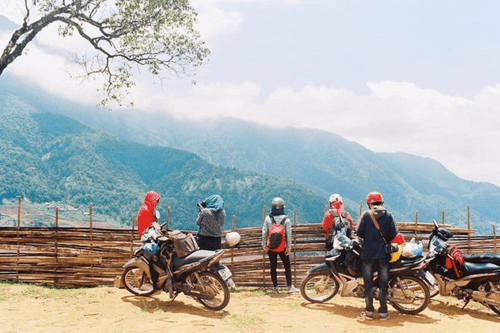
A guided motorbike tour is something you really must do if you enjoy challenges and adventure. You may see Sapa’s natural beauty up close and personally by riding a motorcycle through its hilly and mountainous environment. Nothing is more beautiful than exploring the majestic slopes on your own, with their brilliant terraced farms extending for miles. You can especially try your mettle on Sapa’s treacherous roads.
O Quy Ho Pass is one of the routes you should take. With a deep valley on one side and jagged cliffs on the other, this is referred to as the “King of the Passes.” O Quy Ho, which connects the Lao Cai and Lai Chau provinces, is roughly 50 kilometers long. More almost 2000 meters above sea level, you can view both the valleys below and the top of Fansipan. The best time to visit this pass if you want to take beautiful sunset shots is between 5 and 5:30 PM. The entire pass is painted a lovely golden hue as the sun slowly sinks behind the mountains.
Offer
Explore Ham Rong Peak
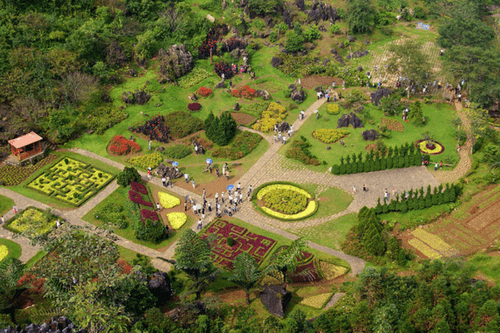
The Ham Rong is a peak in Sapa’s Hoang Lien Son range. It is a well-known and popular tourist site specializing in eco-tourism. This mountain is ideal for planning a picnic that combines dining, shopping, and sightseeing because there are many stores and lovely flower beds on the route up the mountain.
The mountain rises to more than 1,800 meters from its lowest point of 1,450 meters. The most well-known tourist destinations in Sa Pa town, including Muong Hoa Valley, Ta Van Village, and Cat Cat Village, may be seen in closer detail from the mountain’s summit. You will feel like you are in a fairytale setting as you make your way up to Ham Rong Peak by ascending stone steps and passing small structures like Orchid Garden, Peach Garden, Sapa Telecom Station, and Heaven Gate.
- Address: Sapa, Lao Cai province
- Open hours: 6 AM – 6 Pm daily
- Ticket: 2.98 USD/person for adults, 1.28 USD/person for children
Offer
Discover Cat Cat village
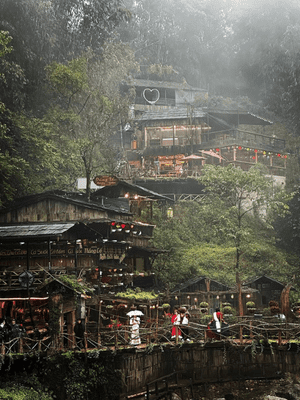
(source: @thegatedreverb)
Cat Cat village is located 2 kilometers from Sapa’s town so you can travel by foot or motorbike. This is a tranquil H’mong community where many customs and traditional crafts, like weaving, silver carving, and jewelry making, are still practiced. Cat Cat Village has a unique charm that never fails to wow. From the vivid flower beds surrounding the old walled home next to the paved road to the cultural areas of Northwestern village, there is something for everyone. Everything blends to form a vibrant picture of nature.
The journey to the village is rather picturesque; on either side of the twisting roads, there are terraced fields with distinctive roofs. Three streams—the Tien Sa, Vang, and Bac streams—converge at Cat Cat village’s center as you over the Si bridge.
Wearing H’mong clothes to explore and immerse yourself in this location like a true local is an experience not to be missed. You will undoubtedly have a lot of beautiful images with vibrant and attractive clothes. There will be several shops to rent colorful costumes right at the hamlet’s entrance, with each set costing only about 2.13 USD. In addition to learning about the Mong people’s way of life, you can buy handmade items as gifts and sample the local cuisine.
Suggestion: This location is extremely close to Fansipan summit; you can combine seeing both locations in your trip.
- Address: Hoang Lien, Sapa town, Lao Cai
- Entrance ticket: 3.84 USD/person for adults, 2.13 USD/person for children
Experience the local culture at Bac Ha market

(source: unsplash.com)
Bac Ha market is a superb place to go if you want to learn more about the ethnic people living in Sapa’s surrounding villages. At roughly 76 kilometers from the city center, this market is Sapa’s biggest and most well-known.
All villagers will assemble here on market day, with a large concentration of H’Mong and Dao people selling their wares along both sides of the road. You can enjoy local dishes here for meager prices while admiring the colorful costumes worn by the residents. Another enjoyable activity is shopping. Many products are sold at this market, but the jewelry and brocade section is perhaps the busiest. For optional gifts for family and friends, you can choose little, vibrant souvenirs here, such as necklaces, bracelets, purses, hats, scarves, and more.
Suggestion: Bac Ha market takes place every Sunday and lasts from early morning until about 2 p.m. As a result, if you want to experience all of the intriguing events in this market, you should arrive early in the morning.
Offer
From Sa Pa: Sunday Bac Ha Market Group Tour
Visit the spectacular French colonial-style Sapa Stone Church
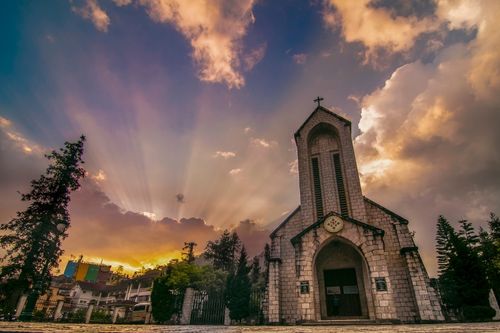
The Sapa Stone Church was constructed in 1926 and dedicated in 1935. People particularly regard this as a unique icon of the foggy Sapa town. This piece was created by a French architect who documented the history and battle marks left on the church’s stone slabs.
Almost all of the structure is made of stone. The ancient stone church in Sapa is fully furnished with chambers for various sections and has a total area of more than 6,000 square meters. As you enter the church, you will be awed by the elaborate European architecture. Even the smallest features of the historic stone church in Sapa’s La Gothic architectural style are present. Here, the appearance and architecture are shaped like a cross in the Gothic manner of very old Rome.
Because of its ancient and distinctive architecture, you will experience a sense of holiness, sanctity, and reverence when visiting this church. Sapa Square, where many cultural events, gatherings, and village festivals occur, is close to the church. You will therefore find a lot of exciting things to do here.
- Address: Sapa town, Sapa, Lao Cai
- Open hour: 8 AM – 6 PM daily
- Entrance ticket: Free
Check out the Cho Tinh – Sapa Love Market
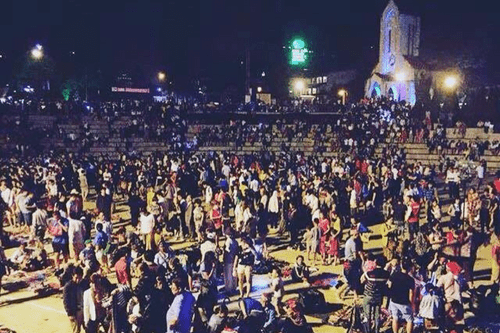
You won’t be able to locate a Cho Tinh anyplace else, which is one of the distinctive cultures of the northern alpine ethnic groups. “Tinh” in this context refers to love. This is where young people from the Dao and H’Mong ethnic groups meet and go on dates when they reach maturity.
Every Saturday night, there is a love market in the square opposite the Sapa Stone Church. Although it is referred to as a market, this location will mostly be used for leisure and cultural events. The village boys and girls will perform a love song program starting at 8 p.m. and continuing until dawn the next morning. The trumpet’s sound pulled everyone together as they danced while the flute roused the entire mountain and woodland area.
When visiting this market, don’t forget to try the food in addition to dancing and singing and engaging with the locals. Colorful and fragrant grilled skews of vegetables, buffalo meat, hog, and beef rolled with cabbage, and savoring a couple of glasses of maize wine or apple cider under the cool night sky of the mountain town will be unique memories in your journey.
- Address: 54, Sa Pa Town, Sa Pa, Lao Cai
Visit Ta Phin village, home to the Red Dao people
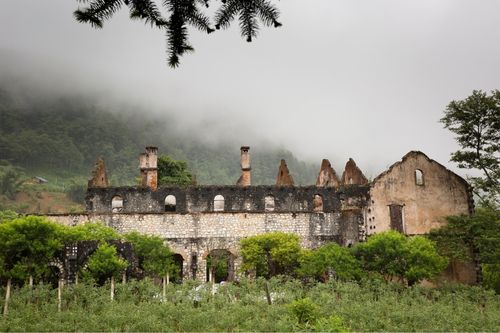
Ta Phin, 12 kilometers outside town, is where the Red Dao ethnic dwell. Among Sapa’s tourist destinations, this one is the most tranquil. As you go through the lush terraced fields, you’ll find a tranquil Sapa that is unlike the busy life in the city center.
Before entering the settlement, you will encounter an ancient monastery with fascinating architecture. This unusual architectural convent was established during the French period. Despite being abandoned for a long time, it still has a mystery and enchanting beauty that draws many people to the unspoiled alpine region. This will undoubtedly provide a one-of-a-kind nostalgic photography backdrop for your self-sufficient Sapa trip.
Particularly in Ta Phin, You can also experience the Red Dao people’s herbal bathing, a traditional therapeutic practice. The peasants had to spend three days in the jungle to collect enough medicinal leaves to fill a pot for bathing. This technique has many positive advantages, including blood circulation, body detoxification, and fatigue relief, and is especially beneficial for tendons. Nothing is more satisfying than taking a soothing dip in a herbal bath after a long day of travel.
In the town of Ta Phin, Brocade Village is another location worth seeing. You can learn about and try the Dao people’s distinctive traditional dyeing methods. In addition, there are also an old persimmon garden and a large strawberry garden with delicious red berries.
- Address: Ta Phin, Sa Pa, Lao Cai
- Ticket: 2.13 USD per person
Check out Ta Phin Cave
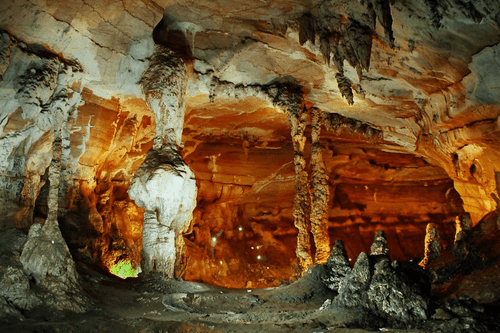
Ta Phin Cave is an excellent choice for those who enjoy exploring, particularly caves. A mysterious and beautiful cave, known locally as Ti O Cam, is found far from Ta Phin village in the North beneath a range of limestone rocks. The locals consider this cave sacred because they believe it is the resting place of the Dao people’s ancestors.
Ta Phin cave is located in the same mountain range as the Hoang Lien Son range and has a width of around 3m and a height of about 5m.
The stalactites developed over thousands of years by water interference are condensed huge and small stalactites of various shapes. There’s a rock that looks like a woman cradling a child in some areas and smooth white columns cascading from the roof that glisten with a jade hue in others. Holding a lamp in the dark light to uncover the mystery items in the cave is a memorable experience.
- Address: Ta Phin, Sa Pa, Lao Cai
Trying Sapa’s local cuisines
There are many reasons why Sapa is so famous as a tourist destination. One of them is the intriguing and delectable Sapa cuisine.
The food in Sapa is prepared simply with common ingredients while retaining a variety of alluring flavors. These mouthwatering dishes may not have the most elegant appearance, but they will “beat” your taste buds.
Here are some must-try dishes.
Thang Co – Horse meat stew
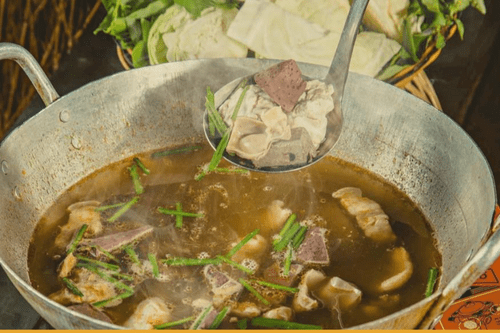
You may quickly discover a specialty of Sapa with the odd name of Thang Co in the love market or the fair. This dish is a staple of the H’Mong culture and dates back more than a century. Horse meat, offal, and bones are used to make this soup. Thang Co, frequently prepared in a sizable pan and has a harsh taste reminiscent of raw horse intestine, is well suited for Sapa’s chilly climate. Locals frequently joke that if you visit Sapa but don’t appreciate Thang Co, you can’t leave.
This dish is available in various forms, made with beef, buffalo meat, horse organs, stewed bones, raw vegetables, and several exotic spices. These varieties are similar to the sorts of hot beef, and pork belly hot pots found in southern Vietnam and are more acceptable for a wide range of diners. Cost per Thang Co ranges between 4.26 and 14.07 USD.
Some famous restaurants to sample Thang Co
- A Phu Sa Pa: 15 Fansipan, Sa Pa, Lao Cai
- Thang Co A Quynh: 15, Thach Son, Sapa
- Ngoc Cu Thang Co: Luong Khanh Thien, Duyen Hai Ward, Lao Cai
Black Chicken
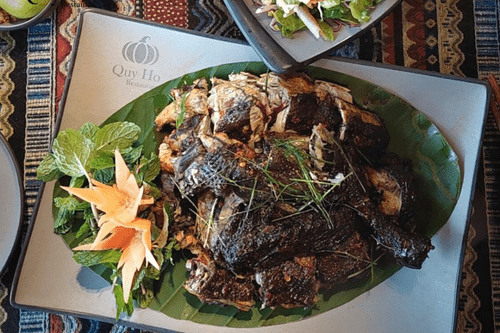
Many H’Mong families farm black chicken, which is used in numerous daily recipes. Black chickens are little creatures, weighing just 200–300g each. This dish has numerous positive effects on the body and is regarded as a particularly nourishing folk remedy for the elderly or the recently unwell.
Honey-grilled black chicken is the cuisine that Sapa locals enjoy the best. The chicken has tough skin, but the meat is tender and flavorful; when combined with salt, pepper, lemon, or mint leaves, they will undoubtedly bring you an unforgettable culinary experience in the land of fog.
Some famous restaurants to sample black chicken
- Gerbera Restaurant: 28 Cau May, Sapa, Lao Cai
- A Phu Sa Pa: 15 Fansipan, Sa Pa, Lao Cai.
Grilled stream fish
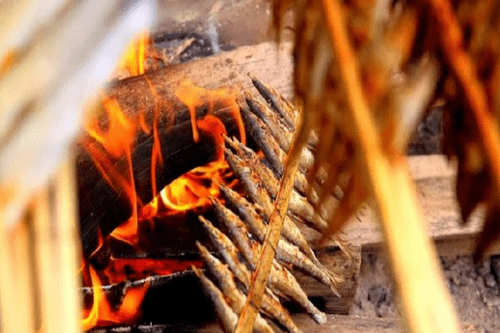
Stream fish are normally little, around the size of a knife handle, live in schools, and are used to make very appealing grilled dishes. It has a naturally sweet flavor, firm meat, and is not fishy. Trying this dish while enjoying a glass of wine will leave you with an unforgettable impression. If you get the chance, go fishing and cooking on the spot! It will be an exciting discovery and convey a sense of harmony with nature and the beauty of the foggy land.
If you don’t have time to go fishing, you can enjoy stream fish at Sapa restaurants. In addition to grilled stream fish, crispy spring fish is well-liked.
Some famous restaurants to sample stream grilled fish
- Chapa Hills Restaurant: 38, Cau May, Sapa
- A Phu Sa Pa: 15 Fansipan, Sa Pa, Lao Cai
- Moment Romantic Restaurant: 001A Silver Waterfall, Sa Pa, Lao Cai
Tao Meo alcoholic bevarage
Tao Meo is a liqueur that has long been connected to Sapa and the H’Mong ethnic community. It is created from the aforementioned wild apples, which are first picked, soaked, fermented, and then macerated in rice wine, typically for several months. It can also be prepared with dried and cut apple slices. The beverage is amber in color, has a mildly sweet flavor, and smells of caramel and apples.
It is not an exaggeration to claim that when paired with a glass of this drink, every dish in Sapa becomes a masterpiece. The spicy flavor and intense aroma, followed by the lingering sweetness on the tip of the tongue, appear to stimulate all senses in the first sip. Because this can help with headaches, dizziness, drowsiness, and sleep, visitors frequently purchase it to give to friends and family. A liter of apple cider costs between 2.56 and 3.84 USD in Sapa.
Some famous places to buy this
- Quoc Cuong: 74, Thach Son, Sapa
- HTX Ruou H’Mong: 130, Dien Bien Phu, Sapa
- Ruou Tay Bac: 09, Silver Waterfall, Sapa, Lao Cai
Visit Sapa Culture Museum to learn about Sapa culture
The Sapa Culture Museum was constructed and opened to the public in 2017. It is located 1.5 kilometers from the town center. This is the best location for those who want to learn more about the ethnic groups who inhabit the villages in the gorgeous Northwest mountains, including their cultural beauty and way of life.
This museum is home to a vast collection of artifacts, including up to 200 samples and documents, as well as books, movies, and models that recreate people’s daily lives truly and completely. Additionally, you can learn more about the H’Mong, Tay, Giay, Xa Pho, Ha Nhi, and Red Dao ethnic groups, as well as the beauty of local culture, beliefs, and religion, as well as how Sapa town was formed historically.
- Address: inside the campus of Lao Cai Provincial Tourism Promotion and Information Center, 02 Fansipan, Sapa town, Lao Cai province
- Open hours: 8:30 AM – 11:30 AM and 1:30 PM – 5 PM daily
- Entrance ticket: Free
How to get to Sapa from Hanoi
Since Sapa is only 315 kilometers from Hanoi, there are numerous ways to get there. You can reserve a tour that includes a transfer or try one of the options listed below. Visit the booking site or check out the time table below by clicking this link.
Sleeping bus

One of the most convenient and affordable ways to go to Sapa on your own is by bus. Ticket prices range from 9.38 to 17.06 USD based on the kind of seat and the estimated trip time of 4 to 6 hours. You can call the bus operator to make reservations or book tickets online through Klook (here).
Some sleeping buses you can refer to:
- Sapa Dragon Express: 0888 888 502
- Sapa Shuttle Bus: 00988 911 777
- Hanoi Sapa Interbus Lines: 0886 385 577
- Sao Viet Travel: 1900 272 708
- King Express Bus: 0978 914 895
Train
To avoid traffic and enjoy sightseeing, most visitors travel from Hanoi to Sapa by train. Numerous train companies run the popular high-class Hanoi – Sapa – Hanoi route; the train’s interior is spotless and contemporary. Numerous well-known railway routes include the Vietnam Railways Train, the Sapaly Express Train, the Pumpkin Train, the Chapa Express Train… The departure time is around 8:30 am, and depending on the seat class, the price for a one-way ticket ranges from 23.45 to 29.85 USD. The cost of a private room can be doubled or quadrupled, but you will have the most privacy possible to enjoy the long ride.
You can purchase the railway ticket here.
- Departure point: Hanoi Railway Station – No. 1, Tran Quy Cap Street, Hoan Kiem District, Hanoi.
Offer
We hope this article is helpful to you. Enjoy your trip, and let us know which attraction is your favorite.
Find & Compare Things To Do in Sapa
Offer
Hanoi to Sapa Public Transportation Timetable
